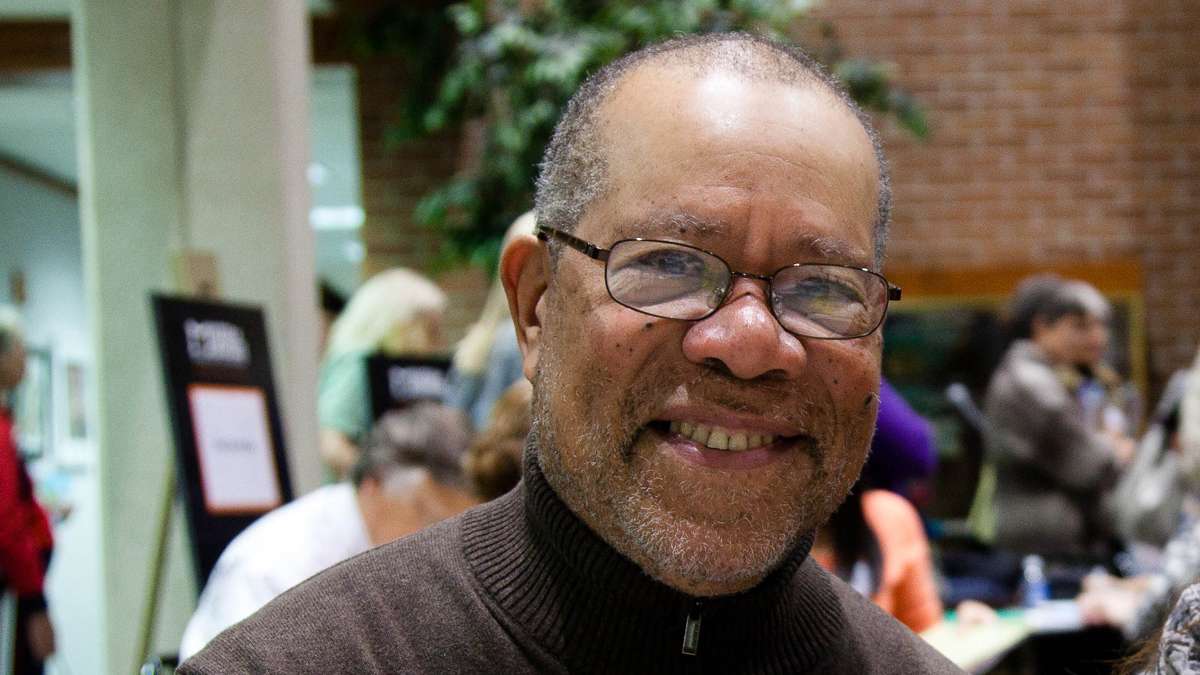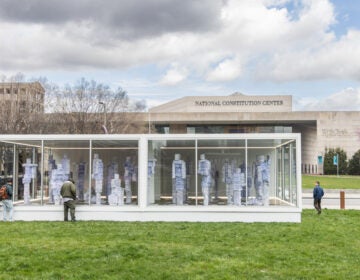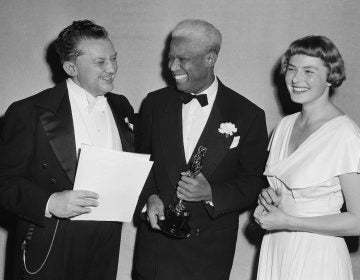Jerry Pinkney’s illustrated world, an escape from a nation in conflict
To this day, as the world gets more complicated, with more stress on me, my family, my community, our world, I can retreat to my imagination and the act of making pictures.
ListenI was born in 1939, smack in the middle of a family of eight. Growing up in the 1940s, I was also smack in the middle of another turbulent era in American history. Our country was still recovering from the Dust Bowl, the Great Depression was finally ending, and World War II was just beginning. I learned most of what I knew about these events through short news clips they used to show at the movies — my buddies and I liked westerns best — right before the cartoons and the feature film.
The Great Depression had certainly touched and challenged my parents, but whatever fears and trepidation they harbored about the future, they did a pretty good job of hiding them from us kids. As for the war, they tried to shelter us from the gruesome reality. I remember my parents quickly putting away their copies of Life magazine that featured articles about the country’s war efforts, wins, and losses. They stowed them in a large wardrobe at the end of the second floor landing of our home, and when I was left alone, I would sneak up there, sit cross-legged in front of the wardrobe, and retrieve the forbidden magazines from the bottom drawer.
Flipping through the pages, I stared at photographs of figures lying face down in murky waters on a beach in Burma, the Japanese bombing Pearl Harbor, burned out planes, running soldiers and sailors, and lines of bone-thin people in raggedy clothing — victims who had been liberated from the concentration camps in Europe. It was hard to return to my immediate world — to schoolwork, or to the lunch my mother had left out for me — and even after I closed the drawer, the horrific pictures stuck with me. They would often surface during our school air raid drills, and on nights when I found it difficult to sleep, I would imagine plumes of smoke, drawn faces, and frail bodies.
I tried to remind myself that all of this was happening far away, with oceans separating these events from me and my family at 51 East Earlham Street in Philadelphia. The closest the war had come to us was Pearl Harbor, and that was still all the way in the middle of the Pacific Ocean.
The conflict at home
However, what was much closer to my daily life was the shadow of Jim Crow laws and the effect that they had on black people. That criminal part of our country’s history had a wide reach, and it touched my small, African-American community, all of us living on one city block on a dead-end street in Philadelphia.
In the 1940s, Philly was not as plainly segregated as many of the Southern states, but there was still often an implied separation of the races — limitations on where we could go, things we could do, who we could talk to. Stores did not have any “whites only” signs posted, but the “open” sign on the door didn’t always mean that my friends and I really could enter and be served. I never knew if that “welcome” sign included my parents, uncles, aunts, and the black adults who were our neighbors, teachers, and pastors — those very individuals who tried their best to instill a sense of self worth in us.
How confusing and scary not to know where I could freely go! I was always on guard for a possible rejection. Why didn’t some white people want to serve us? Why shouldn’t we go into that store, or visit that place? But there were never any answers to my questions, and we children looked for clues about what was safe and how to behave in the adults that surrounded us. Growing up, feeling like someone who is Other can add a lot of weight to your shoulders, making your body feel much heavier than it is.
To escape this hard reality, I turned to artwork. I have loved to draw as far back as I can remember, and my parents nurtured this passion. My dad supplied me with the simplest tools and materials to make art: pencils, scraps of wallpaper, and sketchpads. Later, I earned money to buy my own supplies by shining shoes on Germantown Ave. and selling newspapers on the corner of Chelten and Germantown Ave.
But as I grew older, Dad’s attention to my desire to draw waned. He found it hard to acknowledge his son’s dedication to something creative, because he had no way of understanding it. I’m sure he thought it frivolous at the time, and he must’ve wondered why I would spend so much time at the pages of a sketchbook when I should be preparing for something more serious. As a teenager, I always felt a sense of never being able to measure up to my father’s expectations.
‘My illustrated world’
Back then, though, even I couldn’t have imagined that my need to put marks on paper would start my journey to a career as an artist. With two brothers, three sisters, mom, dad, and me all living in a six-room, two-story row house, life was cramped and loud. But with pencil and pad in hand, I could get lost. I brought to life what was inside my head, creating a world where I was not nervous, where there was no yelling, no loud music, no cursing neighbors, no dyslexia, no sweaty palms before reading in class, no Friday spelling tests, no bullying. No more trying so hard to please my father, who withheld even the smallest nod of recognition for my efforts. There were no police sirens in my illustrated world, either, or city curfews, or newspaper headlines exclaiming the lynching death of Emmett Till, just two years younger than me. Real life was scary, but in drawing, I felt safe. To this day, as the world gets more complicated, with more stress on me, my family, my community, and our world, I can retreat to my imagination and the act of making pictures.
I left Philly in 1960, moving to Boston with my wife, Gloria Jean, where we raised our four children. After my mother’s death in 1968, my aging father spent part of his year with us in Massachusetts. I was a working artist by then, but he still rarely asked about my work and never wanted to see my studio — though some mornings, I would enter to find paintings or tools moved around. It was only when Dad passed on in 1999 and my three sisters and I were reminiscing about him that I learned of a story I had never heard before: Once, upon returning to Philly after one of his Boston visits, my father raved at great length about his successful son, the artist.
—
This essay was previously published on Safe Kids Stories.
Jerry Pinkney is one of the most beloved artists in children’s literature, having illustrated more than 100 books over his five-decade career. He received the 2010 Caldecott Medal for his picture book “The Lion and the Mouse;” other awards include five Caldecott Honor Medals, five Coretta Scott King Book Awards, four Coretta Scott King Honor Awards, and a lifetime achievement award from the Society of Illustrators in New York. Pinkney grew up in Philadelphia’s Germantown neighborhood, and his work touches upon personal and cultural themes of the African-American experience, the majesty of wildlife, and the wisdom of folk tales.
WHYY is your source for fact-based, in-depth journalism and information. As a nonprofit organization, we rely on financial support from readers like you. Please give today.






